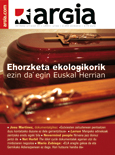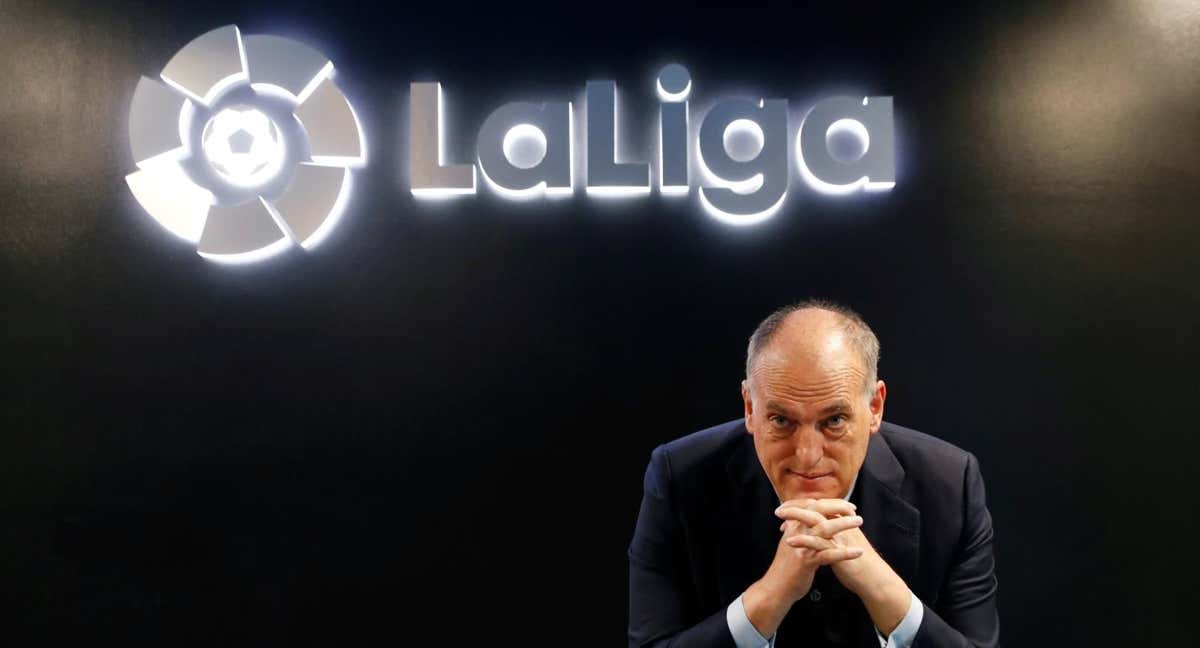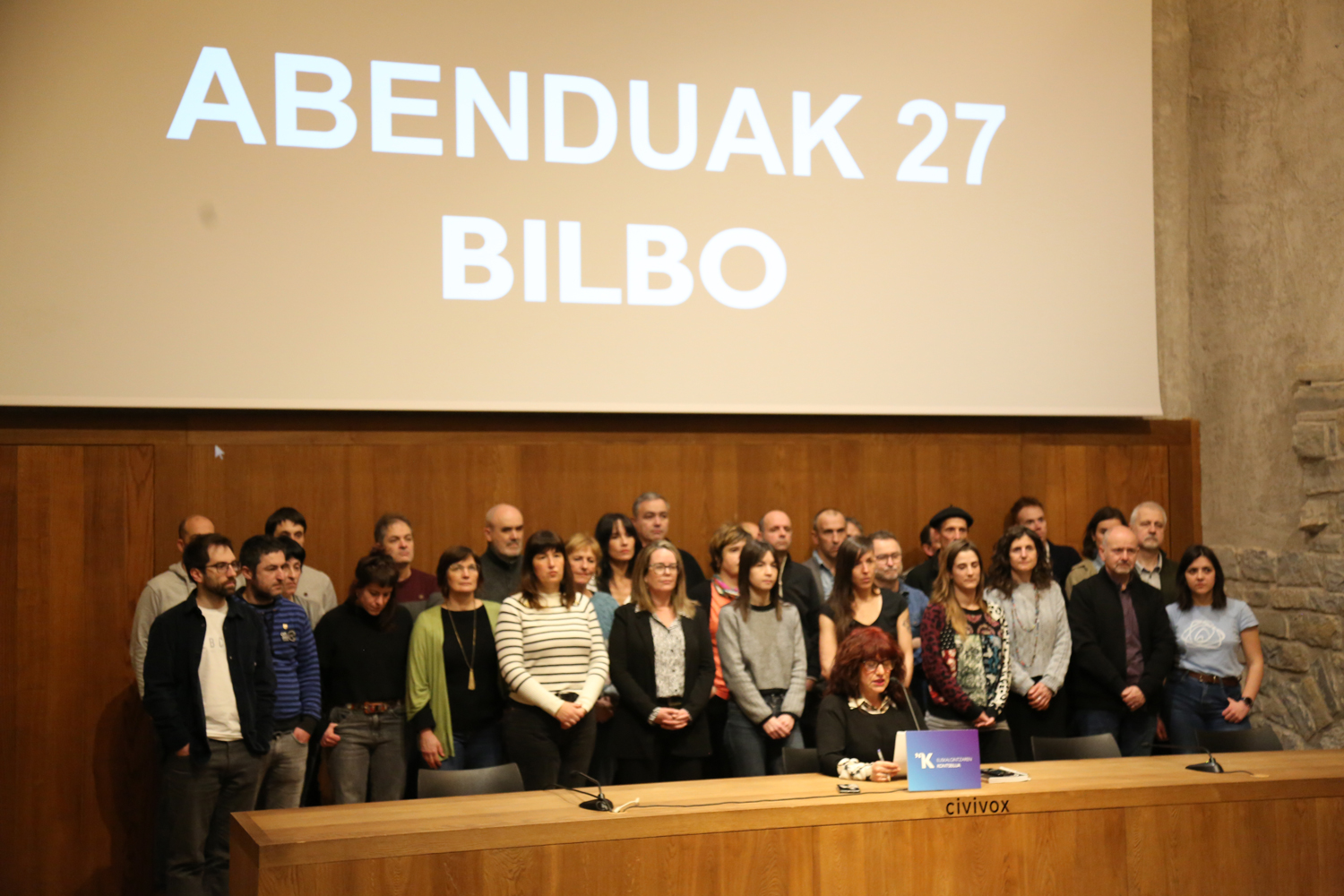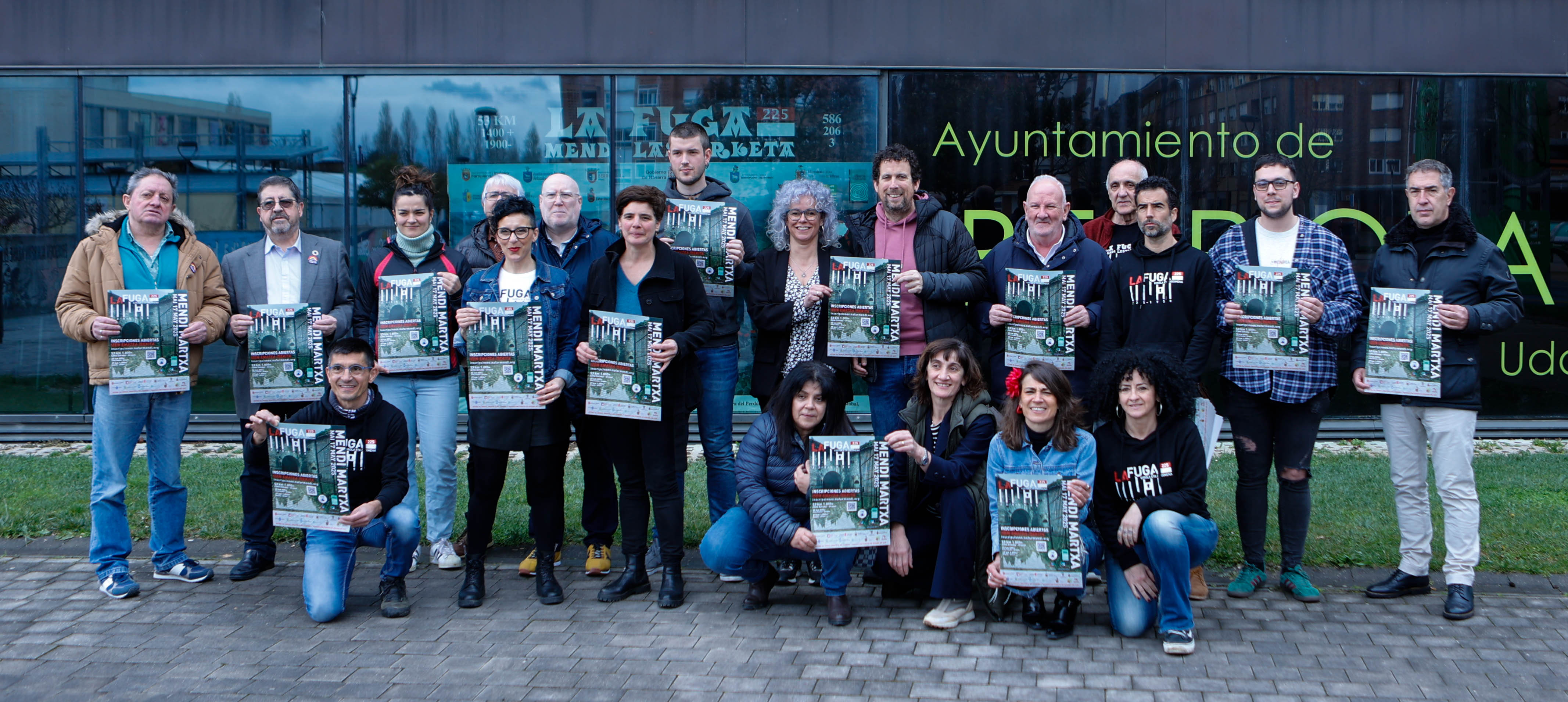Kurt Cobain has come the way he didn't
- “Come as you are,” Cobain sang, and now Nirvana’s music has come to us reformed. In fact, Nevermind People has brought to the jazz style the trio from Seattle, USA. He has been stripped of the grunge’s filth with the participation of four experienced musicians. These creators, raised and educated in the time of Nirvana, have had the opportunity to commemorate their youth.
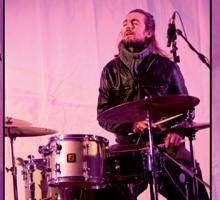
“It’s the music of a time when we lived and it’s been like feeling our adolescence again,” explains Hasier Oleaga of Nevermind People. Oleaga (drums and vocals) has formed the band together with Jorge Abadias (guitar), Aritz Luzuriaga (double bass) and Ainara Ortega (vocals), and with this new initiative they have “played” with five songs from the well-known Nervermind by Nirvana on their album Deconstructing the songs of Nirvana. “The creation process has been fun, because we’ve all been making arrangements and thinking,” says Oleaga.
The local rehearsal became a “laboratory” in order to recreate the songs that are already known. For this they have used different ingredients, without forgetting the basic melodies and melodies. The album of the San Sebastián band also includes well-known songs, to which young musicians have added new flavors and flavors. But to recreate it, the first thing you have to do is to know the songs well. “At first, we played the song as it is and we played it ourselves. Once we get to know him, we try to confuse him with the current influences,” explains the drummer. Each member of the group has an extensive musical career and moves in a wide variety of settings and styles. On top of that, the views are also omnipresent, extending to jazz, rock, pop or other styles. “By playing different music, we feed the musical world we have together,” Oleaga says.
Starting in the summer of 2009
Luzuriaga, Abadias and Oleaga had known each other for a long time, since they had performed at the Musikene, a higher music school in the Basque Country. In the summer of 2009, the trio had a lot of gigs, “and that’s when we started thinking: what are we going to do in all these gigs, let the current take us or take advantage of it to bring out different repertoires? And the second idea came out.” Each brought different proposals to the rehearsal kitchen. They took records and repertoires from Pat Metheny or the Beatles and arranged them in their own way for concerts. They also arranged Nirvana in these live performances, and the ones that have finally been reunited on the album have been five popular songs from Nevermind. “Nirvana’s songbook was well received by the people. People were grateful to hear Metheny’s music live, but it was harder to sell and listen,” says Oleaga. “The fact is, Nirvana’s monograph was more recent and offered us a greater opportunity to express ourselves.” The effort to break the song and bring what is so popular to the jazz field was made easier for them than to do it with Metheny or the Beatles. The music of the Seattle trio also lived in its time, and of course, “music and experiences cannot be divided.”
The live and studio work, however, can be divided, and so have the members of Nevermind People. “During the recording of the album, we took less musical risks than we could take in the live,” says Oleaga. They also asked Ainara Ortega for help. “Ainara put her wisdom and power in our hands, but before and after that we were a trio, and we still are.” The album was recorded in the same summer of 2009, on August 18 at the Irigoyen farm in Zubieta, although the release came in June 2010.
Just the station.
Released by Nirvana in 1991, Nevermind included twelve hymns, five of which have been reinterpreted and broken by the San Sebastian band. Whether the remaining seven will continue to be broken or not, Oleaga makes it clear: “We’re just saying this is a station. The next stop could be another monographic album, or continue with our music.” The Bilbao resident in Donostia-San Sebastián said that if there was
a commercial need at some point, they might do something else, “but we do not impose such limits on ourselves, because that is how it was created at some point. The most important thing for us in music is to feel free and free.”
Jazza eta rockaren arteko lotura bogan jarri duena Brad Mehldau pianista gaztea izan da. Bere disko eta kontzertuetan Beatles, Radiohead, Massive Attack edo Soundgarden bezalako taldeen bertsioak egiten ditu piano soilaren laguntzarekin. “Gaur egungo musikara egokitu ala hil” leloa jazzari ere ezarri ahal zaio.
Azken aldian, asteburuetan, Internet ez dabil ondo. Hasieran, zaila zen webguneei ezarritako blokeoen zergatia ulertzea; orain, badakigu Espainiako La Ligak agindu zituela, futbola modu ilegalean emititzea saihesteko. La Ligaren blokeoak euskal domeinuei eragiten dien... [+]
Bilbon eginiko aurkezpenean iragarri dute ekitaldia, euskarari "arnas berri bat emateko eta behar duen indarraldia gorpuzten hasteko" lehen urratsa izango dela nabarmenduta. Euskaltzale guztiei, baina, oro har, "justizia sozialean eta gizarte kohesioan aurre... [+]
Aljeriatik datoz Mohamed eta Said [izenak asmatuak dira], herri beretik. “Txiki-txikitatik ezagutzen dugu elkar, eskolatik”. Ibilbide ezberdinak egin arren, egun, elkarrekin bizi dira Donostian, kale egoeran. Manteoko etxoletan bizi ziren, joan den astean Poliziak... [+]
Olatz Salvador
Noiz: martxoaren 15ean.
Non: Deustuko jaietan.
------------------------------------------------
Martxoak beti du deustuarrontzat kolore berezia; urtero ospatzen ditugu jaiak, San Jose egunaren bueltan. Bi asteburu bete festa, eta urtetik urtera Deustuko... [+]
Euskal Herrian Euskarazek manifestazioa deitu du apirilaren 6rako, 11n EHEko bi kide epaituko dituztelako. Hiriburuetatik autobusak antolatzen ari dira. Bi helburu bete nahi dituzte, batetik, epaituak izango diren bi kideei babesa erakustea, eta bestetik, euskararentzat justizia... [+]
Pazienteek Donostiara joan behar dute arreta jasotzeko. Osasun Bidasoa plataforma herritarrak salatu du itxierak “are gehiago hondatuko” duela eskualdeko osasun publikoa.
EH Bilduk galdera sorta bat erregistratu zuen Eusko Legebiltzarrean Donostiako Metroaren igarobideko lanen gainkostua argitzeko. Informazio hori atzo jakinarazi zuen Susana Garcia Chueca Mugikortasun sailburu sozialistak.
Kirola eta oroimena uztartuko dituzte, bigarrenez, mendi-martxa baten bitartez. Ez da lehiakorra izanen, helburua beste bat delako. La Fuga izeneko mendi martxak 1938ko sarraskia gogorarazi nahi du. Ezkabako gotorlekuan hasi eta Urepelen amaituko da. Maiatzaren 17an eginen dute.
Seaska Sarean inklusio egoeran dauden 165 ikasleei laguntza bermatzeko hasi dute kanpaina, antolaketa propioa eratuta. Frantziako Hezkuntza Ministerioaren jarrera salatu dute kanpaina aurkezteko prentsaurrekoan, behar bereziak dituzten haurren inklusiorako baliabide... [+]
Martxoaren 19an amaitu zen proiektua aurkezteko epea, baina Errioxako PSOEk adierazi du Forestalia enpresak "interesa baztertu" duela. Enpresak bi parke eoliko eraiki nahi zituen Aragoiko lurretan, baina oraindik ez ditu lortu baimenak eta hori dute egitasmoa... [+]
Muga-zergak apirilaren 2tik aurrera ezarriko dira eta altzairuari eta aluminioari ezarritakoei batuko zaizkie. "Gurekin negozioa egiten duten eta gure aberastasuna eskuratzen duten herrialdeei ezarriko dizkiegu", AEBetako presidenteak adierazi duenez.
%90eko jarraipen "ia erabatekoa" izan du grebak, sindikatuen arabera. Gasteizko parkeak, lorategiak eta eraztun berdea mantentzen dituzte Enviser azpikontratako 90 langileek.
Aurten "Israel Premier Tech" txirrindularitza talde israeldarra ez da Lizarraldeko Miguel Indurain Sari Nagusia lasterketara etorriko. Berri ona da hori Palestinaren askapenaren alde gaudenontzat eta munstro sionistarekin harreman oro etetea nahi dugunontzat, izan... [+]









